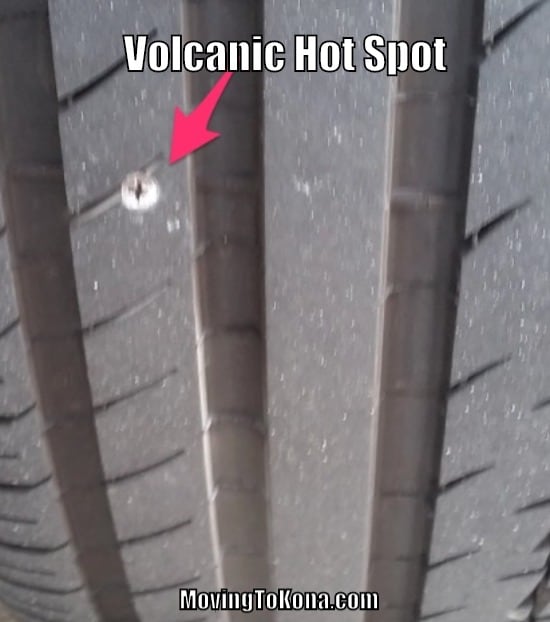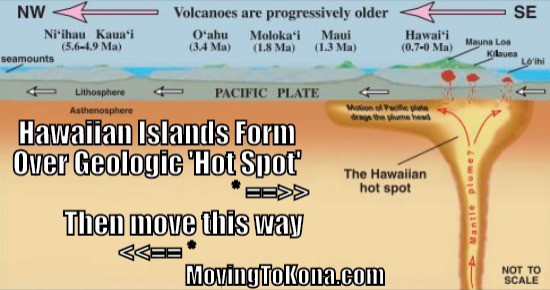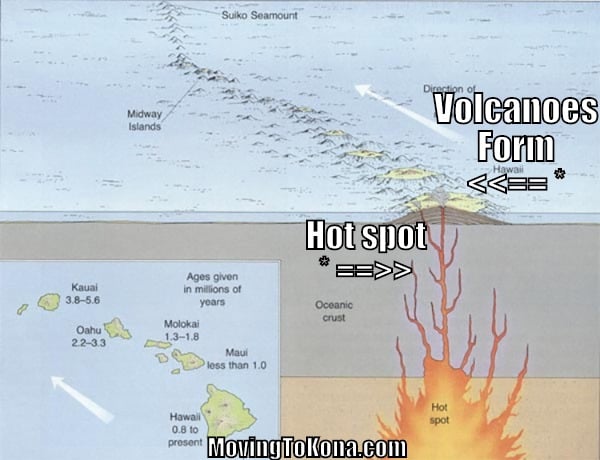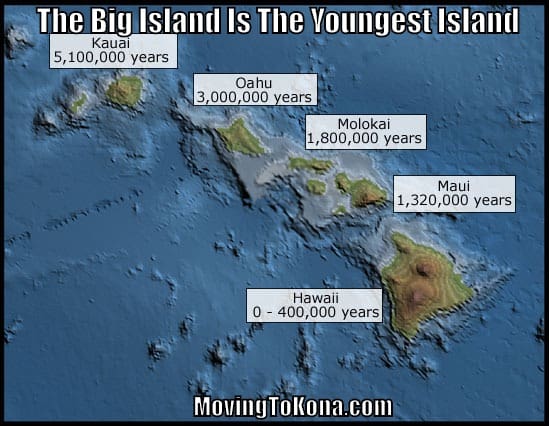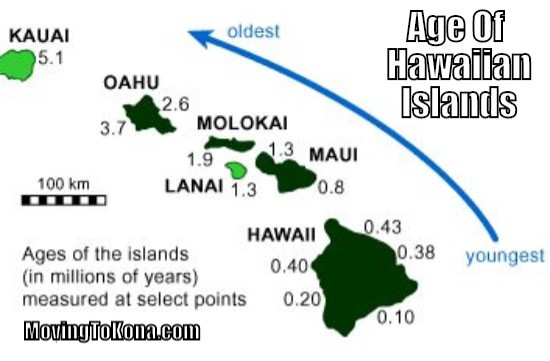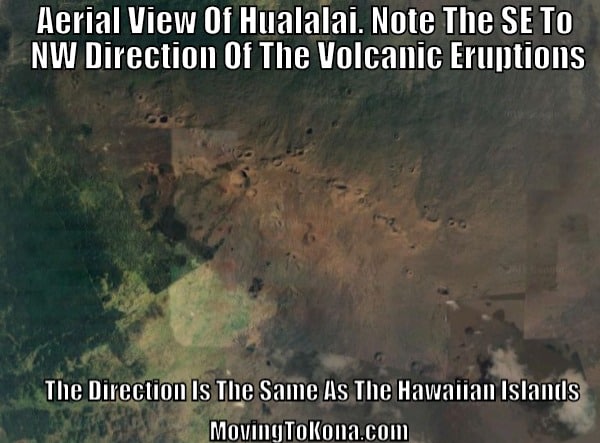What Is A Volcanic ‘Hot Spot’ And What Does That Have To Do With Hawaiian Island Formation? A volcanic hot spot is an upwelling in the earth’s mantle. Magma rises up through the earth and as magma escapes, it forms a volcano. Imagine a nail in a tire, the air that escapes through the puncture is essentially like magma escaping to form a volcano.
The hot spot is stationary, but there is a moving tectonic plate above the hot spot. The hot spot forms a volcano, which becomes a Hawaiian Island, and that island moves NW 2-4″ per year. Eventually, that hot spot forms Kauai, Oahu, Molokai, Lanai, Maui and the Big Island of Hawaii.
Why Is The Big Island The Youngest Island? Because it is currently over the ‘hot spot.’ The Hawaiian hot spot has been active at least 70 million years, producing a volcanic chain that extends 3,750 miles (6,000 km) across the northwest Pacific Ocean
A cutaway view along the Hawaiian island chain showing the inferred mantle plume that has fed the Hawaiian hot spot on the overriding Pacific Plate. The reason for the Hawaiian Island chain’s correspondence in location and age is the Hawaiian hot spot, the place where magma rises from deep within the Earth and forms underwater volcanoes that grow to rise above sea level and create islands. The movement carries the volcanic islands away from the hot spot, making them dormant. Meanwhile, new, active volcanoes form at the hot spot, which today is underneath the Big Island (see image below).
Hot Spot Videos: Here are educational videos about the Hawaiian Islands ‘hot spot.’
The Hawaiian Islands: There are six major islands of Hawaii – Kauai, Oahu, Molokai, Lanai, Maui and the Big Island of Hawaii. Each Hawaiian Island offers a distinctive landscape and appearance that plays a major part in its appeal to locals and visitors alike. You can find a lush, rainforest-covered island (Kauai, the oldest of the main islands), to the active lava flows of the Big Island (the youngest).
Amazon Products
The Hawaiian Islands, By Age: The ages of the Hawaiian Islands correspond directly with their current geographical positions. The main islands are positioned in order of age, from oldest to youngest. The oldest Hawaiian Islands are in the northwest and youngest islands are to the southeast:
- Kauai is approximately 5.1 million years old
- Oahu is approximately 2.2 to 3.4 million years old
- Molokai is approximately 1.3 to 1.9 million years old
- Lanai, at approximately 1.3 million years
- Maui, at 0.8 to 1.3 million years old. T
- The Big Island is less than 0.7 million years old
Big Island Volcanoes: Of the Big Island’s five volcanoes, Kohala and Mauna Kea are considered dormant, last erupting 60,000 and 4,500 years ago, respectively. For Kona area residents, note that Hualalai hasn’t erupted since 1801; Mauna Loa is considered active but has not erupted since 1984. Kilauea has been very active.
Why The Big Island Is The ‘Youngest’ Island: Pay a visit to Hawaii Volcanoes National Park and you can see fresh lava, days, hours and even minutes old. The Big Island is the newest of all the Hawaiian Islands due to a geologic ‘hot spot’ combined with tectonic plate movement. As the tectonic plates move, they slide over a fixed ‘geologic hot spot.’ This hot spot erupts into a volcano as the tectonic plate moves northwest. The hot spot remains stationary, while the Pacific plate moves in a northwesterly direction at a rate of approximately 2 to 4 inches per year.
Hualalai Eruption Pattern Mimics Hawaiian Islands Pattern: Now compare this Google Earth image of Hualalai
The relative age of an island or atoll can be determined based on its state of growth or erosion. The Hawaiian archipelago rides on the Pacific Plate that is moving in a northwesterly direction. The oldest islands in the archipelago are located far to the northwest of the main Hawaiian Islands. The youngest island (Lō‘ihi) is forming under the ocean off the eastern coast of the Big Island of Hawai‘i.
Volcanoes National Park: Pay a visit to Hawaii Volcanoes National Park and you can see fresh, Kilauea Volcano lava, days, hours and even minutes old.
The Eight Stages Of Hawaiian Island Formation: Hawaiian volcanic islands have been forming over a hot spot on the ocean floor for millions of years. There are eight stages in the development of the Hawaiian islands (and eventual erosion). The stages are:
- Initial – deep submarine stage – earliest formation of building from the ocean floor
- Submarine – shield-building stage – growing larger nearing surface but still underwater
- Sea level – shield-building stage – emerging at the surface of the water
- Subaerial – shield-building stage – above water growth period, the mountain is growing
- Capping stage – activity stops temporarily
- Erosional stage – reef growth – weathering and erosion happen and reefs begin to form
- Renewed volcanism stage – cinder cones and ash cones form from smaller eruptions
- Atoll stage – weathering and erosion have reduced volcano back to near sea level
Examples Of The Island Formation Stages: The island of Hawai‘i is approaching mid-life, while Lō‘ihi (still submerged) is still in the deep submarine stage. By contrast, Kure and Midway atolls are in the final stages of the life cycle of an island.
